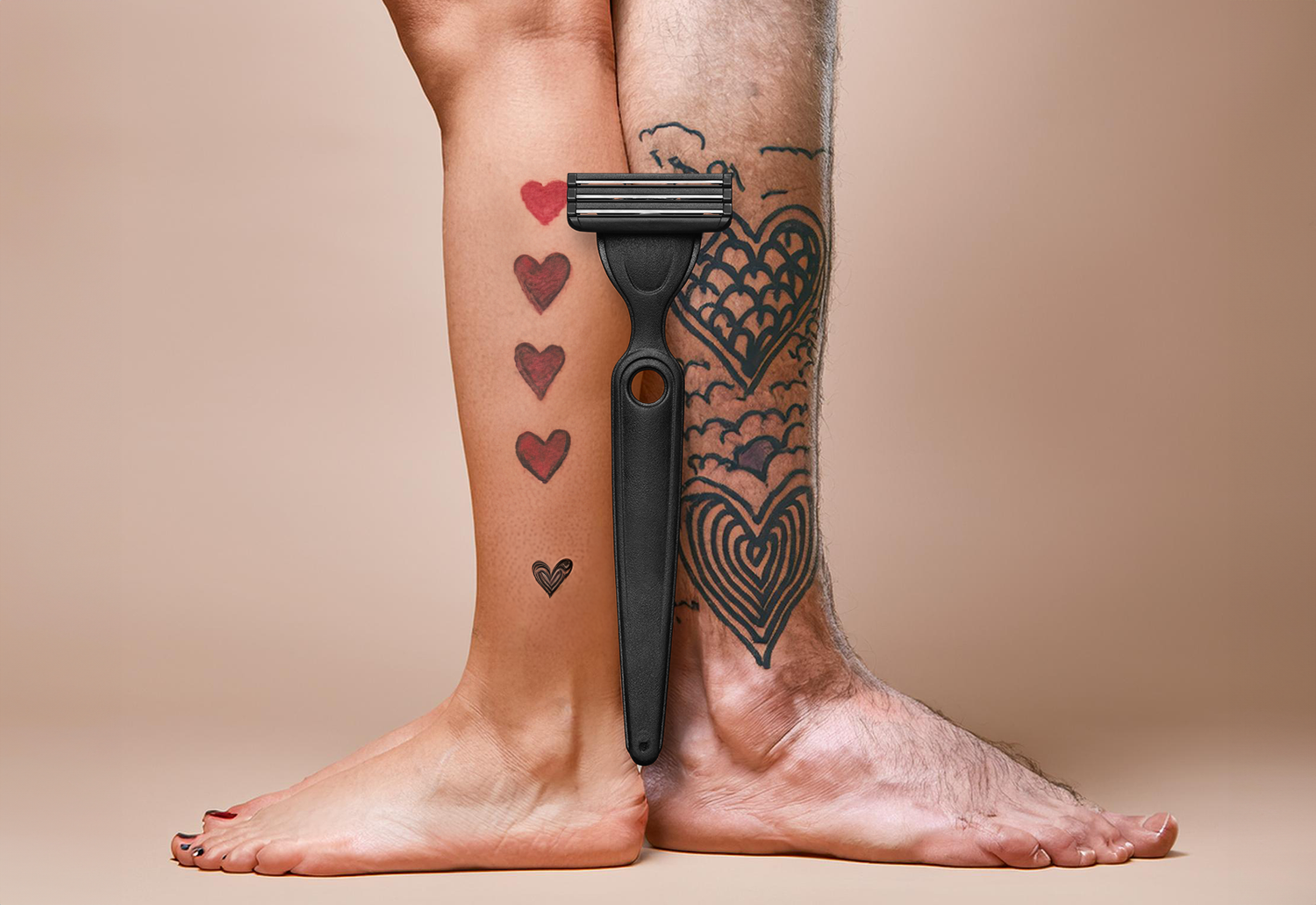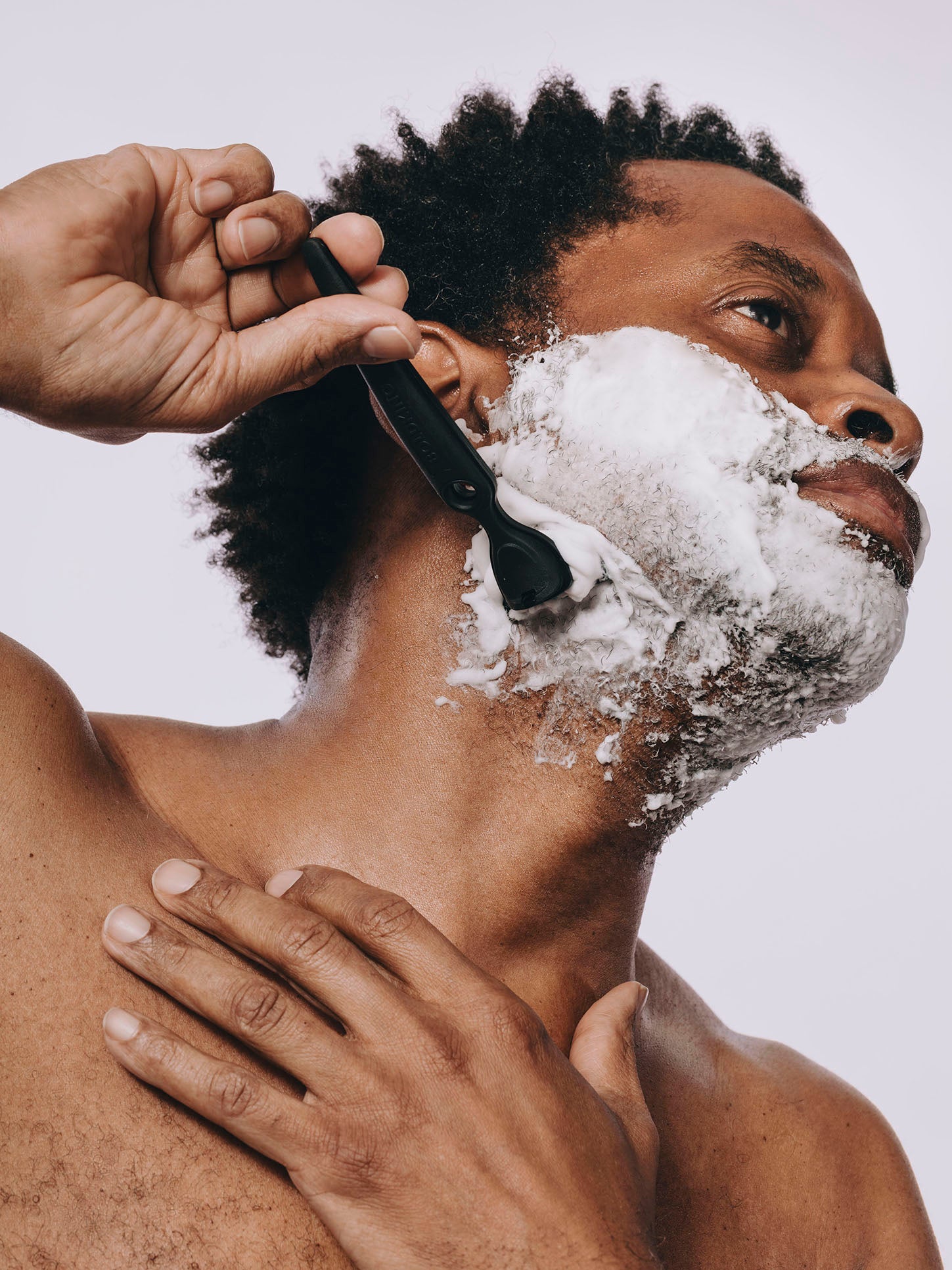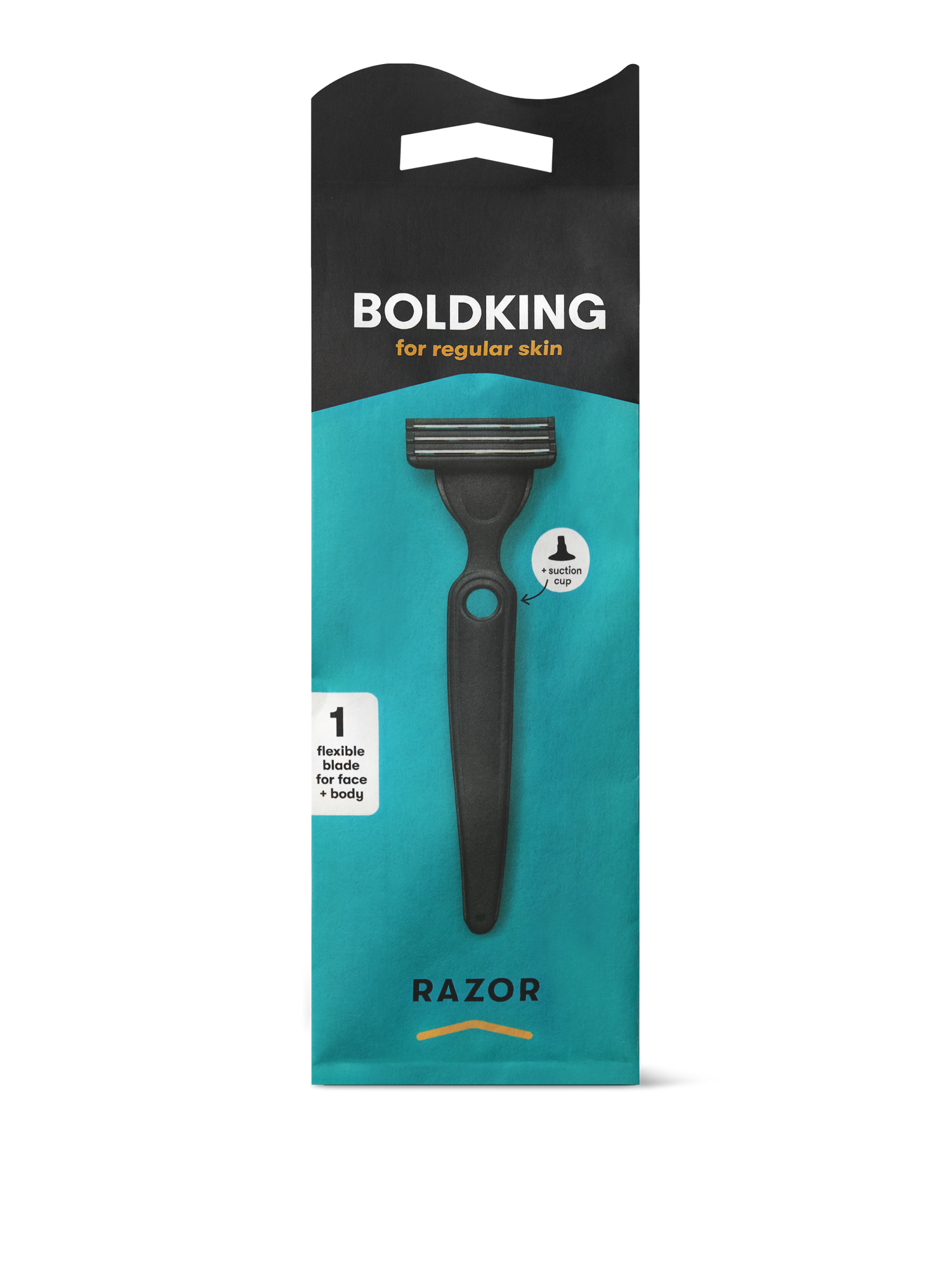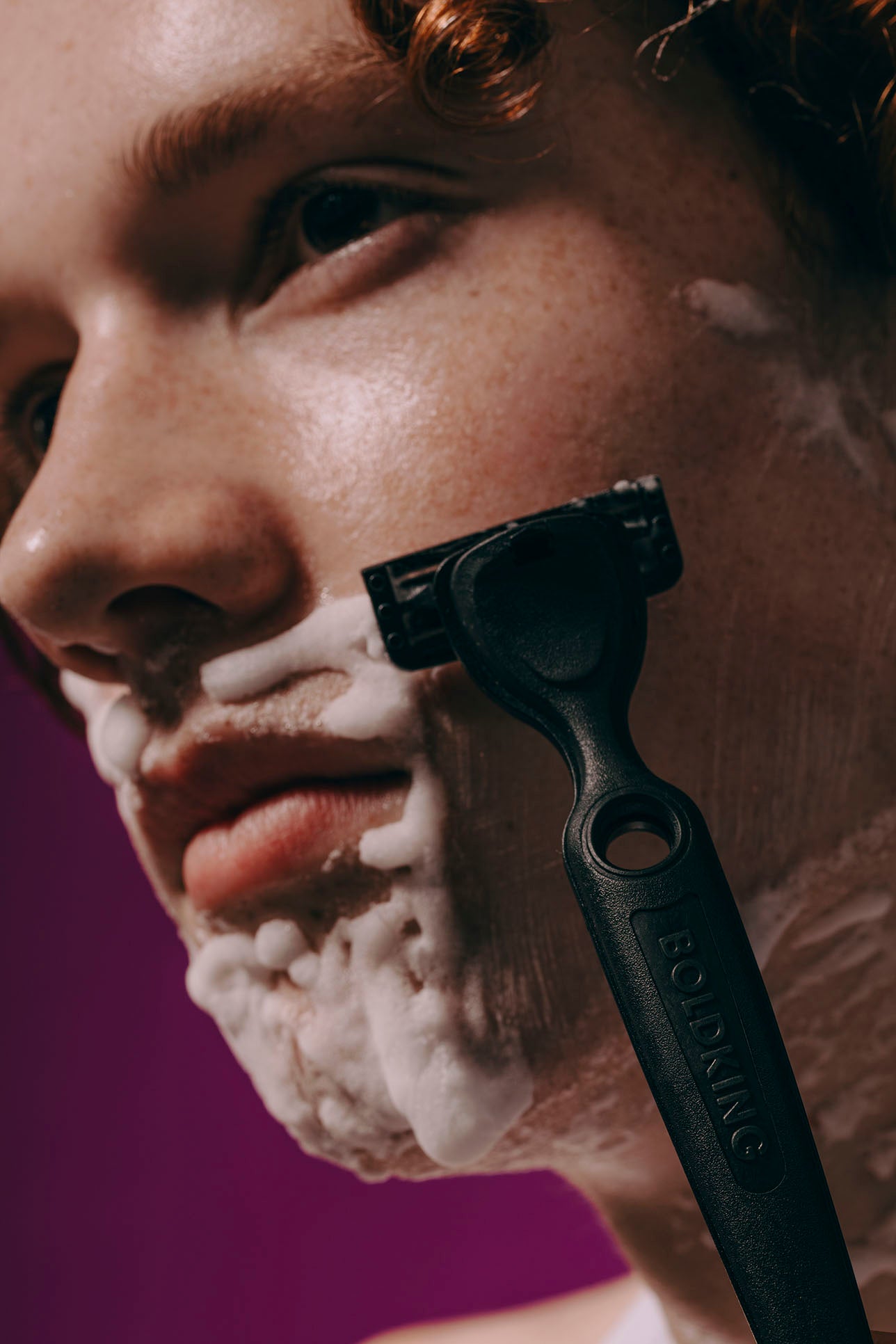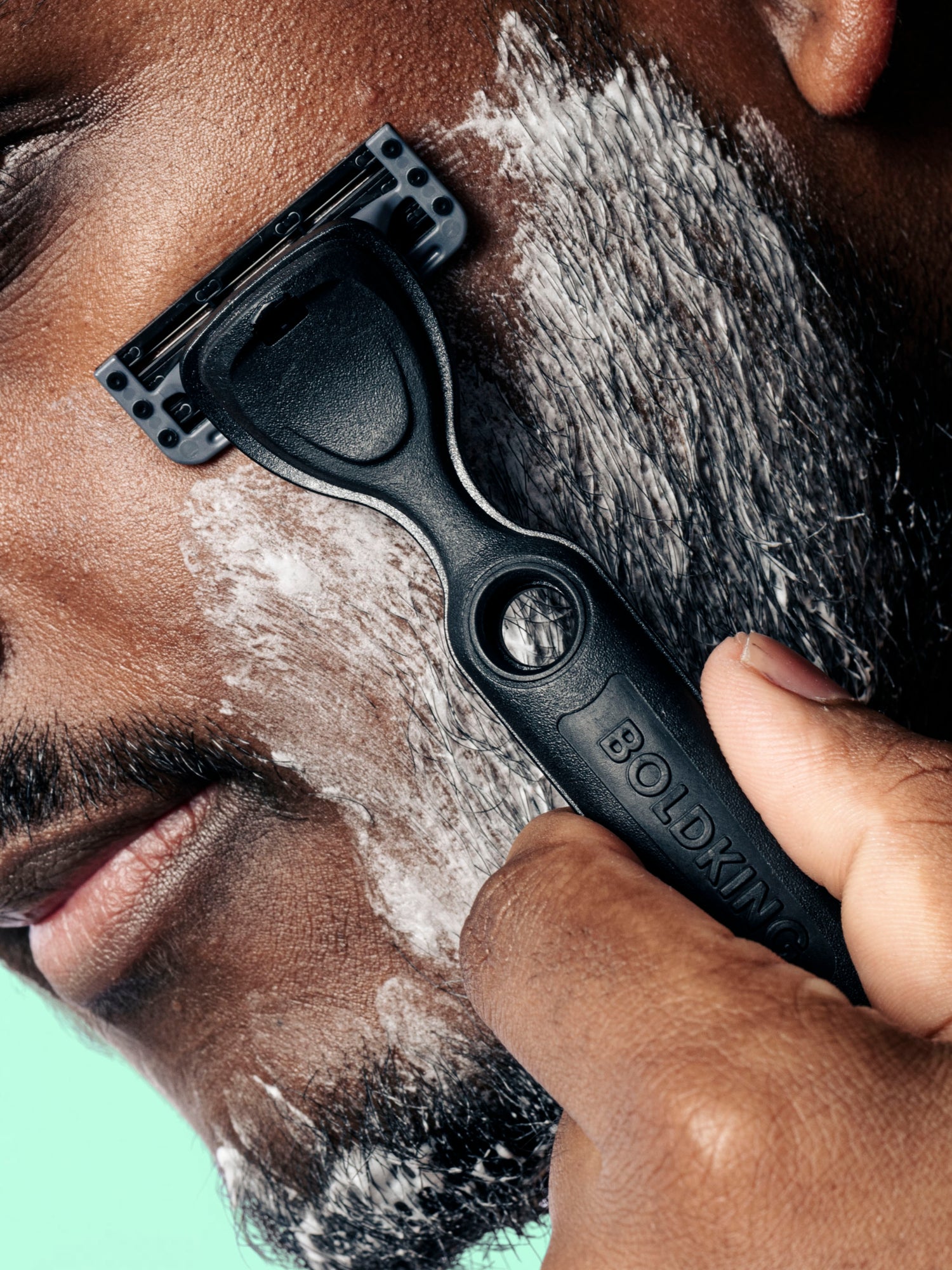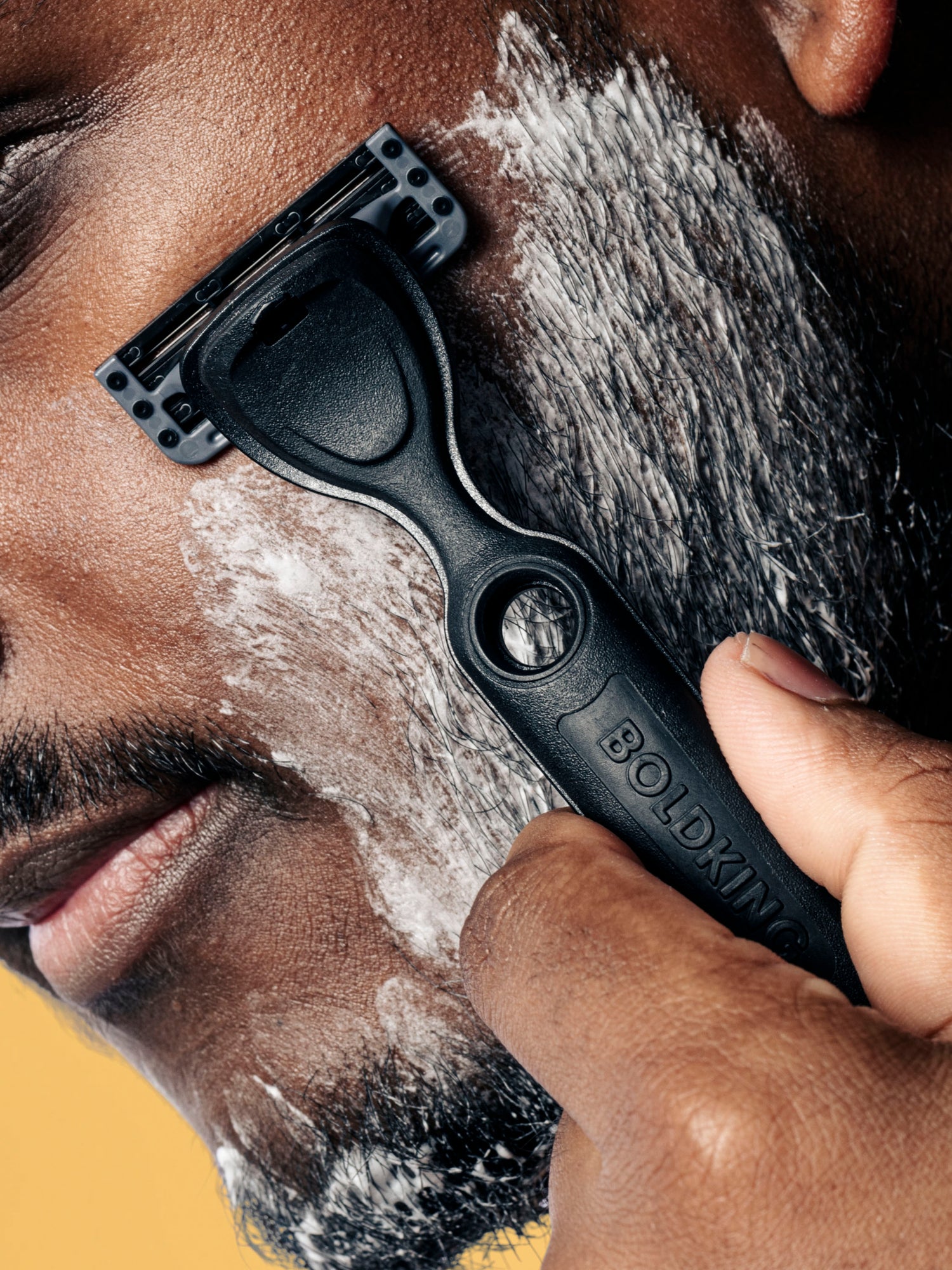If shaving had its own museum; the 20th Century section would be stacked with busts of handsome men with freshly shaved jawlines and bathtubs full of silky-legged statues of women. And at the back of the room, in separates display cases - one blue razor and one pink razor. But as you walk down the corridor and into the bathrooms of today, you'll see men shaving their armpits with 'her' razor and ladies neatening-up the hair around their ankles with 'his' 5 blade wonder razor. So, we ask are women's razor really any different from men's like the ads would have us believe?
The what.
Before we jump into the difference in the razors themselves, let’s look at the difference in terms of hair, between men and women. Weirdly enough, men and women have roughly the same number of body hairs, around 5 million. Why we perceive men as being hairier is because not all hairs are created equally.
There are two types of hair: Vellus and Terminal. Everyone starts life covered in vellus hair, which are thin, fair, and stay short. The hormonal changes that happen around puberty cause some of our Vellus hairs to turn into their older gruff brother; terminal hairs, which are much thicker, darker and longer.
Terminal hairs are fans of testosterone, which both men and women have. But with men having the lion's share of testosterone, they develop more terminal hair. Which, in practice, means men have coarser hair.
The where.
Traditionally, men only shaved their faces, with women being the body grooming OGs. And while there’s recently been a move towards male body grooming, it’s still mostly associated with women. The main difference for the purpose of this discussion is that hair on the head tends to grow more densely, whereas hair on the body tends to be sparser.
The razors.
Now the meat of the discussion, the razors.
Firstly let’s put this to bed, as far as the razor blades themselves are concerned there’s no difference. The cutting edge of the razors are the same regardless of gender. Where the blades do differ is the angle they cut at. Men’s razors cutting closer to the skin, while women’s razors have a less aggressive angle.
The position of the razor head on the handle also differs. Men tend to shave looking at themselves in the mirror, with women looking downwards at their legs. Some female razors have a handle with a higher angle to allow for a better view when shaving the legs. Female razors also tend to have a wider head and more lubricating, or anti-friction strips, for moving smoothly over larger areas of skin with more ease. But by far the most controversial differences between male and female razors are colour and price. Women’s razors, often being pink and costing an average of 11% more than their male equivalent –the pinktax. This goes for the razor’s themselves, along with the things like shaving gel and creams. Making the female shaving experience more expensive allround.

Can women use men's razors?
The reality is that there is a difference between male's and female’s razors, but is this difference worth spending 11% more for the same result? That’s a question only you can answer. But if we’re being frank, every razor is a women’s razor if it’s a woman using it.
With traditional men’s razors, there might be a bit of a learning curve as you adjust to the more aggressive cutting angle of the blade, and the position of the handle. But the closeness of shave, and savings would definitely make it worth moving over.
We haven’t made razors specifically for women. But we have made razors. And a razor is just a razor. A good blade doesn’t discriminate—it simply does what it’s supposed to do: shave. Simple. Our razor and blades are already designed to combine cutting power, and flexibility, which makes it great for shaving anywhere. Making it equally good for men and women.
